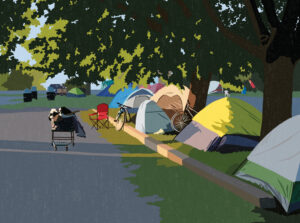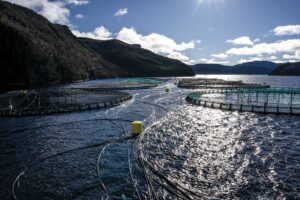
People & Culture
Kahkiihtwaam ee-pee-kiiweehtataahk: Bringing it back home again
The story of how a critically endangered Indigenous language can be saved
- 6310 words
- 26 minutes
This article is over 5 years old and may contain outdated information.
People & Culture

There are several things you have to take into consideration as expedition leader when you and your fellow climbers are huddled underneath a tarp 9,700 feet (3,000 metres) up a mountain, struggling to keep warm while a blizzard rages outside.
I talked to my team about all the dangers we faced. We had to consider the calories, for one. We had brought two lunches and two litres of water each. We’d already eaten our lunch and normally had dinner at 8 p.m. But were we going to be there for another 14 hours? Another day? There was no way to know. So we decided to conserve our food and water right then.
Then there was the possibility that we might not make it back to find our trail, that the avalanche risk might not improve or that we would get frostbitten. And once we decided to pull on our snowshoes, get all our gear together and tear down our bivy, we had to be absolutely sure about leaving, because we’d be wasting precious time and energy if we had to set up our bivy again.
At 8:30 that night I called it. There was a break in the storm, and I could now see 40 feet in front of me. We packed up everything and raced down the snow slope. The visibility was so bad that at one point, Jeff at the end of the rope could not see me at the front of the rope. But it was the right decision, because we reached our high camp.
Everybody was happy and high-fiving. We were still thinking the storm would pass, because we’ve had it where it would snow for several days in the afternoon and be perfectly clear in the morning. I was thinking to myself, this is the weather pattern for this part of the world and this mountain. But part of me also thought this storm was going to last a while, because it was way more intense than anything we’d seen yet.
We hunkered down in our tents and the blizzard ended up staying for three more days. By the second day, we knew we would no longer be able to climb again because the snow load on the avalanche slope was too intense. I also realized that we might not get out any time soon, so we started rationing food again.
That’s when I called it. I knew it wasn’t safe out there anymore. The others were saying they still wanted to try and reach the summit. I laid out our options: we could go and have another look at another line or two while facing additional crevasse danger and wasting more energy. We knew that on any line the first thousand feet were experiencing lot of avalanche activity (we had watched 14 avalanches on one rest day) and because of all the fresh snow, the avalanche risk was more intense. Even going and having a look at the summit was a redundant exercise.
The conditions had simply turned against us. We had to change our goal from getting to the top of the mountain to getting safely off of it.
So on that Saturday morning while the blizzard raged on and reality set in, I made the call to a helicopter to get ready to pick us up.
This post is the fourth in a series. To read other posts by this author, click here.
Are you passionate about Canadian geography?
You can support Canadian Geographic in 3 ways:

People & Culture
The story of how a critically endangered Indigenous language can be saved

Places
In Banff National Park, Alberta, as in protected areas across the country, managers find it difficult to balance the desire of people to experience wilderness with an imperative to conserve it

People & Culture
For unhoused residents and those who help them, the pandemic was another wave in a rising tide of challenges

Environment
Struggle and success in Atlantic Canada, where aquaculturists strive to overcome climate change and contamination while chasing a sustainable carbon footprint